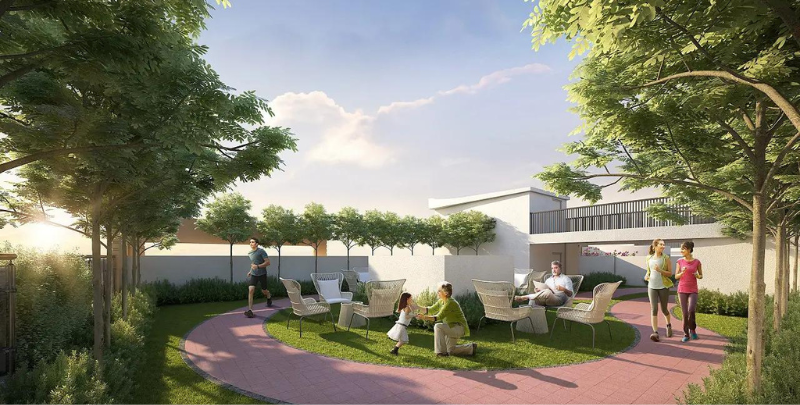Guwahati is undergoing rapid development, and its landscape is evolving significantly. The Guwahati Metropolitan Area (GMA), spanning approximately 275 square kilometres, has witnessed extensive construction projects such as the Bharalumukh Railway crossing connecting Santipur and the upcoming ring road encircling the city. Major institutions like the new AIIMS and the anticipated IIM highlight the city’s growth trajectory. However, this urban expansion has led to a concerning reduction in green spaces, impacting the overall development and environmental health of the city.
Decline in Urban Greenery
A study by Chandra Kant Pawe and Anup Saikia, analysing Landsat images from 1976 to 2018, reveals a dramatic reduction in various types of forests within the GMA:
- Dense forests have decreased by 44.4%
- Moderately dense forests have decreased by 43.4%
- Open forests have decreased by 17.5%
- Scrubland has decreased by 4.8%
Simultaneously, non-forested areas have increased twelvefold, expanding by 1,475 hectares during the same period. This urbanisation has led to a decline in Guwahati’s urban greenery, a concern among residents and environmentalists alike.
According to recent data from Global Forest Watch, Kamrup Metropolitan in Assam has experienced a significant loss in tree cover from 2001 to 2023, amounting to 1.25 thousand hectares. This represents a striking 100% decrease since 2000, contributing to 0.39% of the global total loss. The decline in tree cover has led to the emission of 523 kilotons of CO2 equivalents, highlighting the severe environmental impact.
The depletion of tree cover not only affects the city’s aesthetic appeal but also has far-reaching consequences for air quality, climate regulation, and overall ecological balance. As urban areas expand, the need to incorporate open green spaces into residential real estate properties becomes increasingly critical.
Why Are Green Spaces Important for Flats in Guwahati?
Open green spaces are like small patches of heaven within residential flats. Being able to escape into nature from the chaos of the city is invaluable. Here are a few benefits of having a small piece of nature in our homes:
Green Zones Promote a Healthy Lifestyle
Living near green zones, such as parks and reserve forest areas, significantly enhances the quality of life. These spaces encourage social interaction, with residents often meeting and connecting during walks or runs through the park. This socialisation fosters a stronger sense of community, making neighbourhoods more vibrant and connected.
In Guwahati, many people prioritise daily walks and prefer living near natural spaces. This preference drives real estate builders, including Achyut Group, to prioritise green spaces within their properties for better prospects and healthier communities.
Improves Air Quality and Reduces Heat
Green spaces play a crucial role in improving air quality and mitigating urban heat. They filter out pollutants and particulates, enhancing the overall environment. Moreover, these spaces provide much-needed shade during the day, creating perfect play areas for children and cool spots for relaxation.
By reducing air pollution and urban heat, green spaces also help minimise energy usage and greenhouse gas emissions associated with building cooling. This not only benefits the environment but also contributes to the well-being of the residents.
Reduces Electricity Consumption for Flats in Guwahati
The Urban Heat Island (UHI) effect, caused by human activity, leads to higher temperatures in metropolitan areas compared to rural ones. Green spaces in housing developments can help combat UHI by providing shade and cooling through evapotranspiration. This natural cooling effect reduces the need for artificial cooling, leading to lower electricity consumption, cheaper energy bills, and reduced greenhouse gas emissions.
How to Increase Green Spaces in Cities Like Guwahati?
Given the typical scarcity of urban space, the biggest challenge today is finding ways to reconvert urban property to provide the recommended 10-15 metres of green space per inhabitant, as per WHO. Cities must explore alternatives, such as creating natural layers of biodiversity. Apart from public green areas, interior spaces in homes, community rooftops, walls, and facades can be transformed into vertical gardens.
Solutions Offered by Achyut Group
At Achyut Group, we are dedicated to enhancing the living experience of our residents by integrating ample green spaces into our projects. Here are some of the solutions we offer:
- Landscaped Terrace: Our projects feature beautifully landscaped terraces that provide a serene escape, bringing a touch of nature right to your doorstep.
- Open Space Garden: We prioritise open space gardens within our properties, offering residents a lush, green environment to relax and unwind.
- Parks with Kids’ Play Areas and Sitting Spaces: Our parks are designed to cater to all age groups, with dedicated play areas for children and comfortable sitting spaces for adults.
- Peripheral Planting: To create a green buffer around our properties, we incorporate carefully designed peripheral planting, enhancing the aesthetic appeal and environmental benefits of our developments.
At Achyut Group, we believe that integrating green spaces into residential properties is not just a trend but a necessity for sustainable and healthy living. By providing these green spaces, we ensure that our residents enjoy the best of both worlds: the vibrancy of city life and the tranquillity of nature.
As Guwahati continues to develop, the importance of open green spaces within real estate properties cannot be overstated. These spaces offer numerous benefits, from promoting a healthy lifestyle to improving air quality and reducing energy consumption. At Achyut Group, we are committed to creating residential properties that not only meet but exceed these needs, providing our residents with a harmonious and enriched living experience.
So, what are you waiting for? Book your dream home with Achyut Group today!



